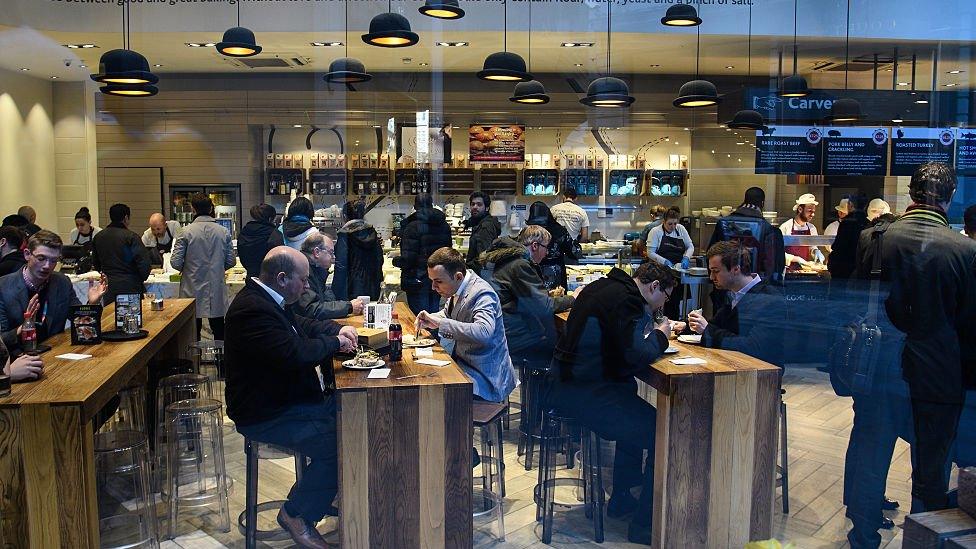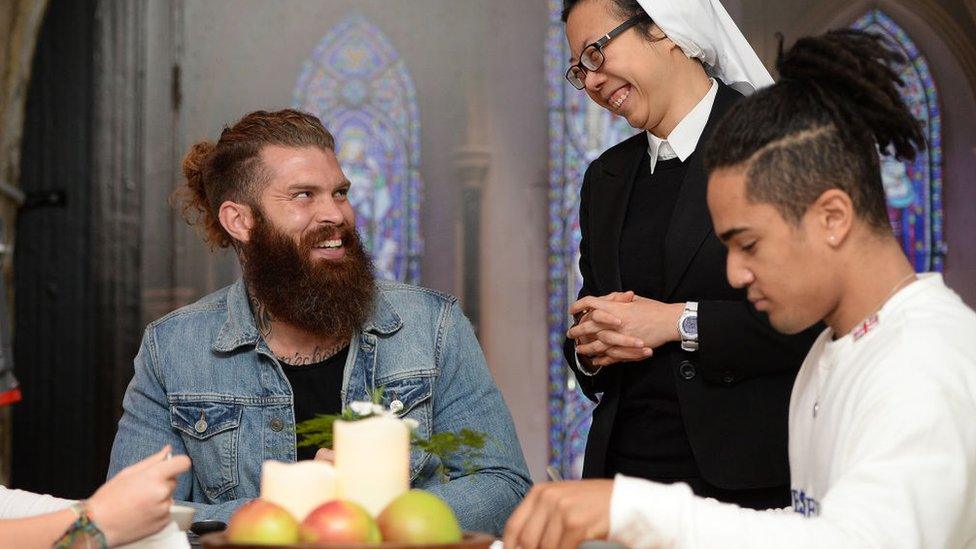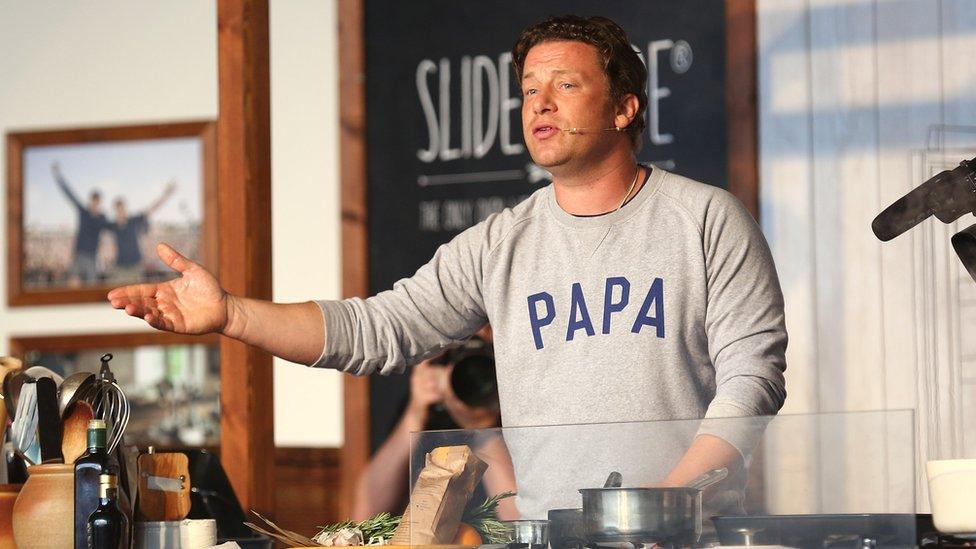What’s eating the restaurant trade?
- Published

The restaurant sector is hardly sizzling at the moment.
Last month burger chain Byron agreed a rescue plan with lenders and landlords which could lead to the closure of up to 20 restaurants.
Also in January, Jamie Oliver's restaurant group said 12 of its 37 outlets would shut their doors - the second wave of closures in the space of a year.
And since the beginning of 2015, shares in the Restaurant Group, which owns Frankie and Bennys and Garfunkels, have lost two thirds of their value.
So what's causing the gloom?
Serial entrepreneur Luke Johnson, who helped expand Pizza Express in the 1990s, says the whole of the food sector in the UK is under pressure at the moment.
Businesses in the sector are having to pay the new living wage, the apprenticeship levy, and deal with "upwards-only rent reviews", he says.
Mr Johnson, who among his many business interests, external is the chairman of casual-dining chain 3Sixty Restaurants, adds that "food and ingredients costs are affecting the whole eating-out market".
That is certainly the case for Jamie's Italian, which said the rising price of ingredients was partly behind its troubles.
It buys many ingredients from Italy and they have become more expensive due to the slide in the value of the pound since Britain's vote to leave the European Union.

Roger Tejwani, head of consumer sector at stockbrokers Finncap, says there are just too many restaurants.
"There is too much capacity in the market with consumers having a considerable amount of choice," he says.
He says there needs to be a big decrease in the number of outlets some chains have.
Customers have so much choice that there is little loyalty, and social media lets people be more aware of a wider range of food, Mr Tejwani says.
Fast-casual restaurant firms have to work hard to persuade people to spend - especially as people are already spending more on experiences.
"They are all competing against each other and other forms of entertainment," he says.
So to win customers restaurant chains have had to discount, making life even tougher.
Social scene
Mr Tejwani argues that restaurants need to move with the times and start taking account of consumer technology.
Younger customers expect to be able to document what they are doing and "want to be seen in a cool place", which means restaurants have to be "Instagrammable", he says.

Creating that cool environment will require investment, and there's less of that to go around, says Mr Johnson.
"The banks are pulling in debt lines where they can," he says, while private equity is also getting harder to come by.
Brexit blues
Uncertainties caused by the Brexit process are having an impact on the casual dining sector as a whole, external, according to consultancy firm Deloitte.
Consumer confidence steadily fell throughout 2017, putting a squeeze on spending on non-essential items, says Deloitte.
"2018 is going to be a challenging year for restaurants, and they will need a tightly-run ship to survive," says Sarah Humphreys, lead partner for casual dining at Deloitte.
"Consumer tastes such as healthy eating, sustainable food sourcing and informal or experiential dining should not be ignored.
"Operators should consider how adaptable their models are to changing tastes, or else face the risk of missing out," she says.
Consumer spending in general took a hit in 2017, having its worst year since 2012, according to payments processor Visa, external.
That's partly because wages have been rising at a slower pace than inflation, leaving consumers worse off.
Taking out
Food delivery firms such as Just Eat and Deliveroo are a double-edged sword for the sector. They can increase sales, and on balance, they increase profit, says Ms Humphreys.
But they can put pressure on restaurants if there's not enough staff to fill the takeaway orders and keep the customers in the restaurant happy, says Mr Tejwani.
There are other downsides. Food delivery firms charge a high commission for delivery, and also restaurants lose the opportunity to sell profitable extras like drinks.
However, Luke Johnson says that while the market is "tough" at the moment, he remains hopeful for the sector.
"Generally speaking the industry remains in reasonable health … I'm sure it will remain profitable in five to ten years time."
- Published31 January 2018

- Published6 January 2017
